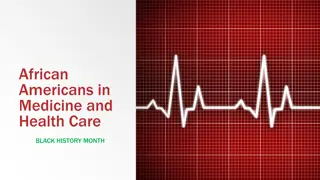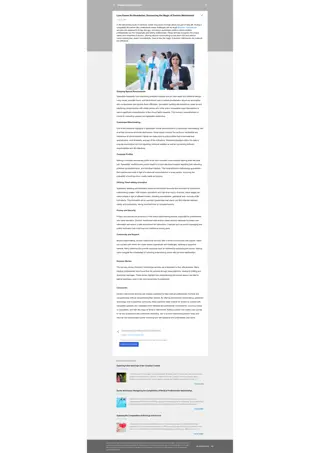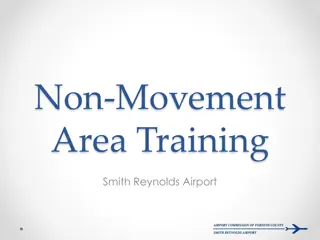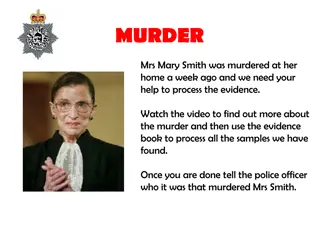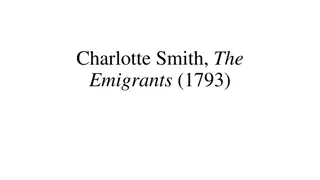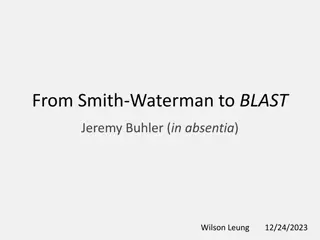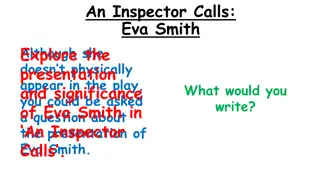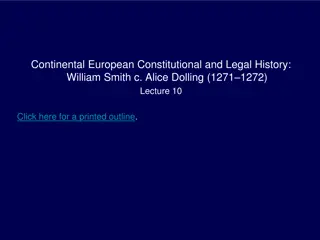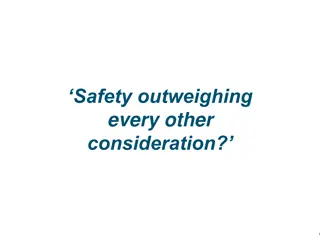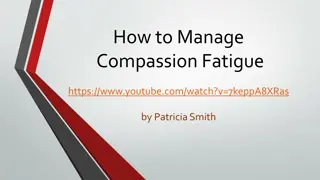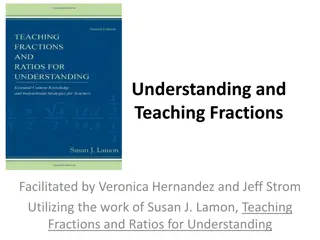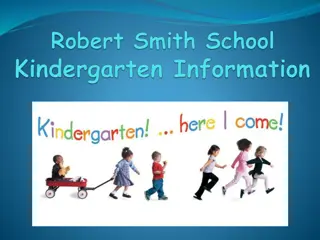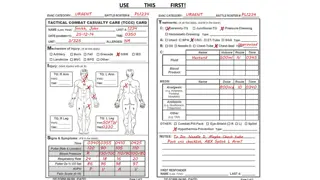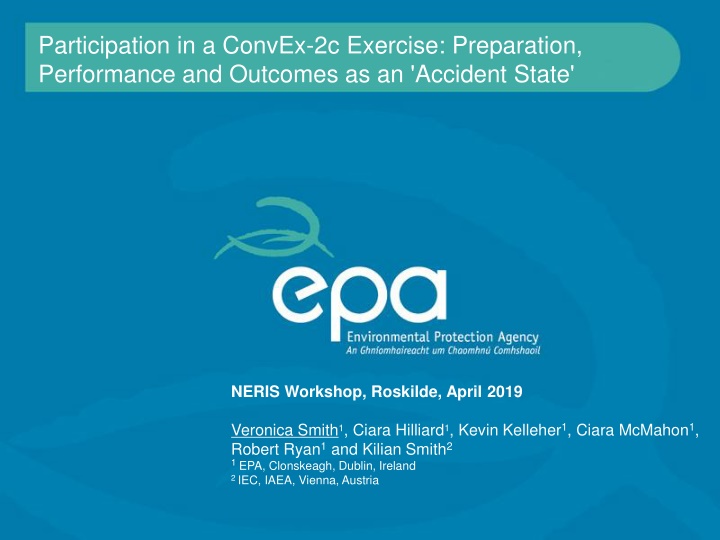
Radiological Emergency Preparedness: ConvEx-2c Exercises Overview
Explore the ConvEx-2c Exercises focusing on preparation, performance, and outcomes related to a hypothetical radiological emergency. Learn how different stakeholders collaborate to ensure effective communication and response in such scenarios.
Download Presentation

Please find below an Image/Link to download the presentation.
The content on the website is provided AS IS for your information and personal use only. It may not be sold, licensed, or shared on other websites without obtaining consent from the author. If you encounter any issues during the download, it is possible that the publisher has removed the file from their server.
You are allowed to download the files provided on this website for personal or commercial use, subject to the condition that they are used lawfully. All files are the property of their respective owners.
The content on the website is provided AS IS for your information and personal use only. It may not be sold, licensed, or shared on other websites without obtaining consent from the author.
E N D
Presentation Transcript
Participation in a ConvEx-2c Exercise: Preparation, Performance and Outcomes as an 'Accident State' NERIS Workshop, Roskilde, April 2019 Veronica Smith1, Ciara Hilliard1, Kevin Kelleher1, Ciara McMahon1, Robert Ryan1 and Kilian Smith2 1 EPA, Clonskeagh, Dublin, Ireland 2 IEC, IAEA, Vienna, Austria
Contents ConvEx-2c exercises Exercise scenario in 2018 Preparation in advance of the exercise Exercise performance Outcomes and lessons learned
IAEA ConvEx Exercises ConvEx Convention Exercises - test the operational arrangements under Convention on Early Notification of a Nuclear Accident Convention on Assistance in the Case of a Nuclear Accident or Radiological Emergency Purpose is to evaluate and further improve the international framework for emergency preparedness and response Three levels of complexity ConvEx-1 (test emergency communication links) ConvEx-2 (test specific parts of the international framework) ConvEx-3 (full-scale international exercises)
ConvEx-2c Exercises To test arrangements for a transnational radiological emergency This exercise is conducted once every two years on a specified announced date
How ConvEx-2c Exercises Operate The 'Accident State' communicates messages for a hypothetical radiological emergency in their State The IEC provides input messages in advance if needed The IEC forwards messages from the 'Accident State' to participating Contact Points and publishes the information submitted on USIE Exercise Other participating NCAs access information on the USIE Exercise web site and confirm that they have read and understood messages and respond appropriately to any requests for advice or information
Preparation with IEC The Environmental Protection Agency (EPA) in Ireland accepted an invitation from the Incident and Emergency Centre (IEC) to be the 'Accident State' in September 2018 A national exercise was not planned Contact points in IEC and EPA were assigned to lead on preparation of arrangements EPA worked closely with the IEC to develop a scenario which would be of interest to other participating countries All preparation was done by email and teleconference Not resource intensive
Preparation in EPA Engagement with relevant stakeholders with a role in response to CBRN incidents Refinement of exercise scenario to be realistic while still ambitious Coordination between in-house teams (Technical Assessment, Media and Information, Regulatory) Preparation of press releases Allocation of roles on the day of the exercise
Overview of Exercise Scenario 2018 Two Ir-192 sources which had been stolen some days earlier in Ireland used in two CBRN incidents in Dublin City Centre Multiple fatalities and casualties (foreign nationals involved) Convention Centre Leinster House
Exercise Participants 70 IAEA Member States and five international organisations (including EUROPOL and the Comprehensive Nuclear-Test-Ban Treaty Organization)
Planned Timeline (Main Points) 27th November 2018 07:20 - First explosion outside Convention Centre in Dublin - EPDs worn by first responders indicate presence of radiation - Area evacuated and cordon put in place - IAEA notified through USIE 09:30 - National Emergency Coordination Group meet 10:35 - Measurement data submitted to IRMIS 11:20 - Patient in regional hospital with symptoms of radiation sickness 12:30 - Second explosion outside D il ireann - Area evacuated and army bomb disposal unit searching for further devices 14:15 - EPA submit a request for assistance 16:00 - End of exercise
Behind the Scenes in EPA on the day Response based in EPA offices (Dublin Technical Assessment Team and Wexford Media and Information Team), no shift change in EPA staff Two Standard Report Forms (SRFs) and a press release issued on 21st November regarding stolen sources Seven SRFs and a Request for Assistance submitted on 27th November Three press releases prepared and submitted to USIE After each submission on USIE, IEC contacted EPA to acknowledge the submission and verify the details Two sets of measurement data submitted to IRMIS
Issues Arising During Exercise Time pressures responding to incident and ongoing communication with IEC Volume of emails from USIE was huge Access to USIE Exercise website Scenario perhaps overly ambitious given time period for exercise Agreeing press releases Decisions on cordons took longer than expected Disclosure of information regarding nationality of victims
Lessons Learned Playing as Accident State Don t underestimate the time required for international communications An excellent practical test of USIE Due to time pressures scenario timeline was difficult to adhere to flexibility required Be aware that a shift change may occur in IEC - allow extra time to accommodate this All organisations involved in response to this incident type should be present - additional time required for exercise preparation to achieve this Exercise took place over nine hours staff operating at full capacity for longer exercise shift change would be required
Lessons Learned for Irelands Response Availability of EPDs for First Responders (fire service, police) Convening (circumstances, timing etc.) of the National Emergency Coordination Group for an incident such as this Ireland CBRN protocol envisages a high level group convened to provide advice for senior officer in charge of the incident Clarity around release of victims identities We need to continue to build relationships and raise awareness amongst the relevant stakeholders involved in this exercise
Information on Victims IEC provided EPA with a list of countries who had citizens who were victims Many requests received from Members States on the nationality and identity of victims This information could not be released during the exercise In Ireland, this information can only be released by coroner Victims families must be notified first Family liaison officers may need to be appointed to obtain DNA from family members to help identify victims Incident sites are crime scenes - need to be preserved for evidence gathering Security issues
In Conclusion Valuable experience for Ireland acting as the 'Accident State' In order to make best use of the experience, sufficient time is required for preparation To take part as the 'Accident State' at the same time as a national exercise would be ideal Don t underestimate the time it takes to modify pre-prepared press statements IEC were very helpful and supportive at all stages From our experience we encourage other countries to volunteer to act as the 'Accident State' for future exercises


